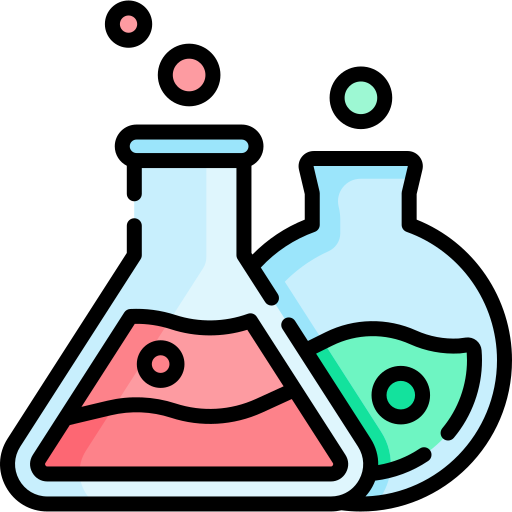Definition of Phenol
Phenols are organic aromatic compounds containing -OH functional group directly attached with the aromatic ring with general formula C6H5OH. Phenols are also known as carbolic acid.
Depending on the number of hydroxyl group attached to aromatic ring phenols are classified as monohydric, dihydric, polyhydric etc.
Compounds containing -OH group in a side-chain attached to an aromatic ring are not phenols. They are aromatic alcohols (Ar-CH2OH).
Nomenclature
In IUPAC system phenol would be named as benzenol. The position and name of the functional group are added as a prefix of the name phenol or benzenol. The carbon contains hydroxy group (-OH) numbered as 1 and then continue numbering in such a way that the other functional group gets least number as possible.
![Phenol 15 By Mephisto spa (Own work) [Public domain], via Wikimedia Commons](https://upload.wikimedia.org/wikipedia/commons/1/1a/Ejemplos_de_fenoles.png)
Many phenols are discovered and used before the chemists were able to name them. These names are still used by chemists. There are no rules for that. For example:
![Phenol 16 By Benjah-bmm27 (Own work) [Public domain], via Wikimedia Commons](https://upload.wikimedia.org/wikipedia/commons/6/6f/Ortho-cresol-2D-skeletal.png)
Uses of Phenol
Phenol are widely used as antiseptic, disinfectant, anesthetic and household cleaning products. It can work against fungi and viruses. A very small quantity of phenol is use as disinfectant in mouthwash and household cleaning products. It is also used as oral analgestic and anesthetic. However concentrated phenol is quite toxic and can damage skin without any pain. In second world war, phenol was used for execution by Nazis.
Phenol is also used as starting material or produce as an intermediate in industry. Plastics, explosive, picric acid and different drugs are made from phenol. In dye industry phenols are widely used to make azo dyes. As wood preservatives, phenols (like cresols) are also used.
Physical properties
Boiling point
The boiling point of phenol are higher than the boiling point of aliphatic alcohol with similar molecular weight because of the stronger intermolecular hydrogen bonding in phenol. Intramolecular hydrogen bonding is found if phenol contains an ortho substituent which can accept hydrogen bond. Thus boiling point of these derivatives further increases.
Solubility
The solubility of phenol is more than the solubility of aliphatic alcohol of similar molecular weight because of the ability to make stronger hydrogen bond with water. Substituted phenol containing more hydrogen bond acceptor or hydrogen bond donor group shows even much more solubility that phenol. e.g. the solubility of p-nitrophenol is more than phenol. However, as nitro group in o-nitrophenol cannot make hydrogen bond with water, thus the solubility doesn’t differ much.
Acidity of phenol
Phenols are more acidic than alcohols but less acidic that carboxylic acid. Phenols are acidic due the formation of more stable phenoxide ions in aqueous solution.
Here the negative charge of oxygen after releasing hydrogen atom dispersed the aromatic ring and thus stabilize.
Chemical properties
Phenol undergoes electrophilic substitution reaction more readily than benzene. Using the same reaction condition when benzene gives mono-substituted product, phenol gives tri-substituted phenol. By improving the condition it is possible to form mono or di substituted phenol.
Nitration of phenol
Phenols are o, p– directory. As for example, phenol reacts with dilute nitric acid to give ortho and para nitrophenol.
![Phenol 18 By Choij (Own work) [Public domain], via Wikimedia Commons](https://upload.wikimedia.org/wikipedia/commons/b/be/PhenolNitration.png)
Halogenation of phenol
Phenol reacts with bromine water to give triboromophenol. Chlorine reacts in similar way to give similar product.
Alkylation of phenol
Alkylation of phenol takes place in presence of alkyl bromide to give phenoxide (similar to alkoxide).
Summary
- Phenols are organic aromatic compounds containing -OH functional group directly attached with the aromatic ring with general formula C6H5OH.
- Phenol are widely used as antiseptic, disinfectant, anesthetic and household cleaning products.
- Phenol is also used as starting material or produce as an intermediate in industry.
- The boiling point of phenol are higher than the boiling point of aliphatic alcohol with similar molecular weight.
- The solubility of phenol is more than the solubility of aliphatic alcohol of similar molecular weight.
- Phenols are more acidic than alcohols but less acidic that carboxylic acid.
- Phenol undergoes electrophilic substitution reaction more readily than benzene.
